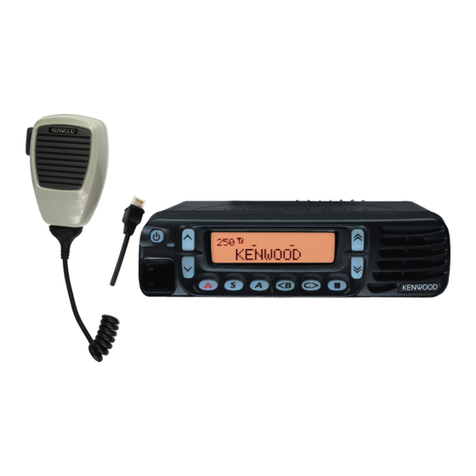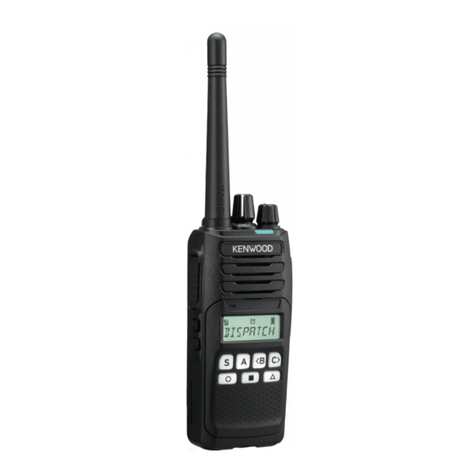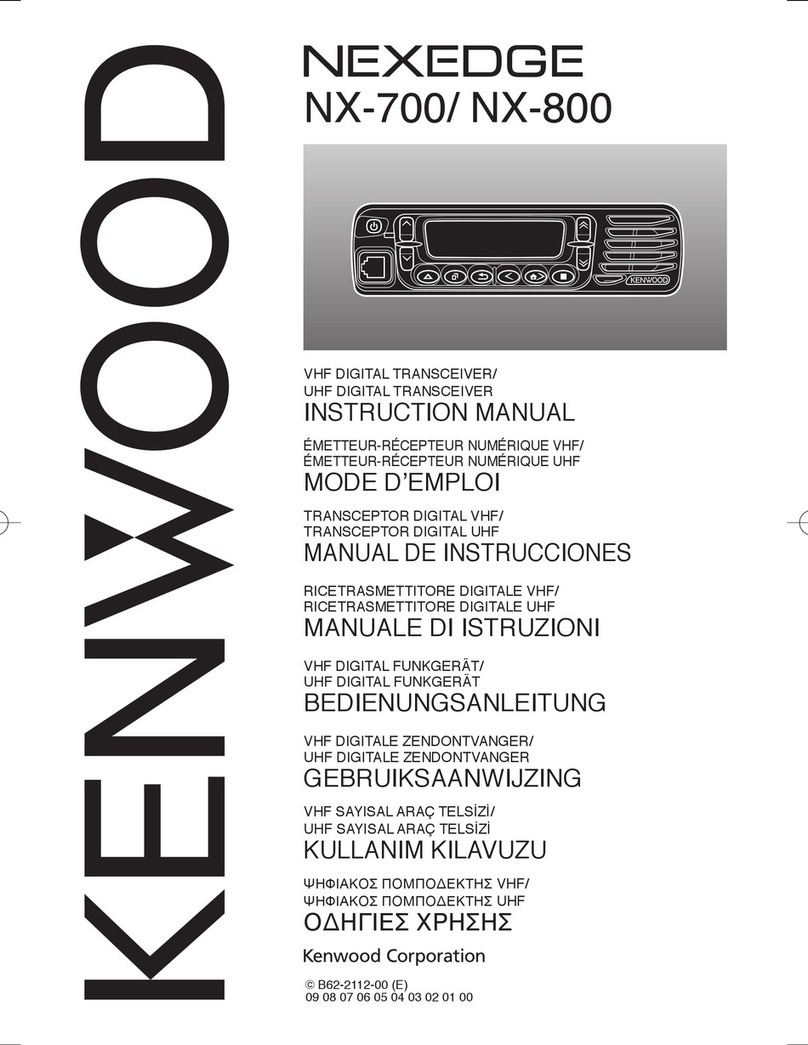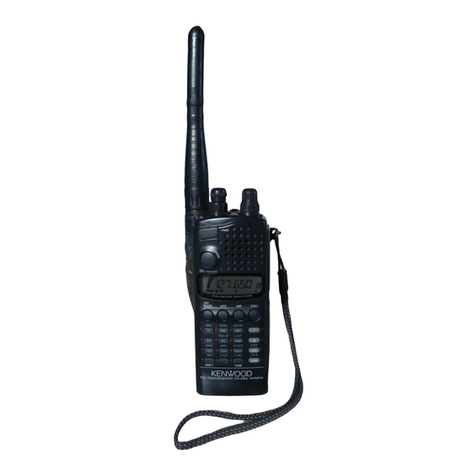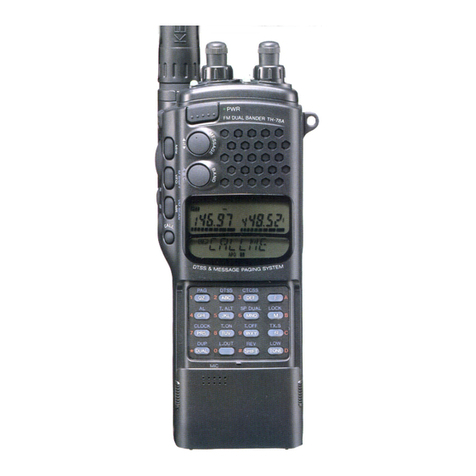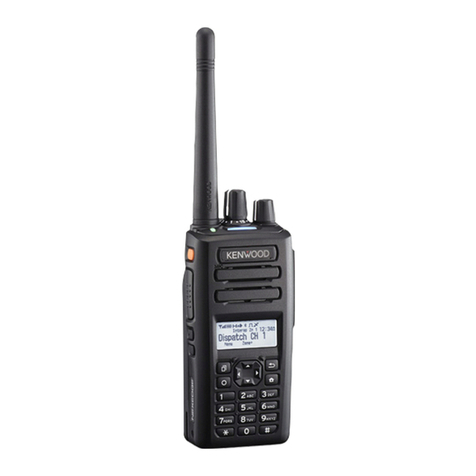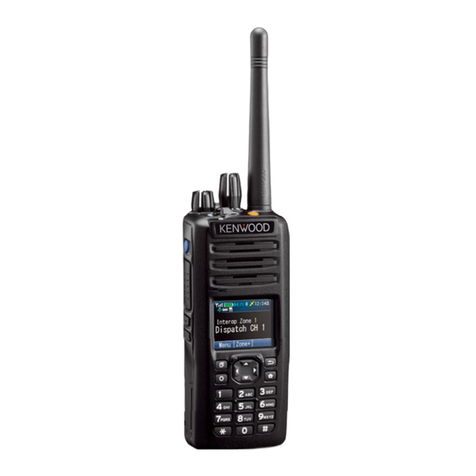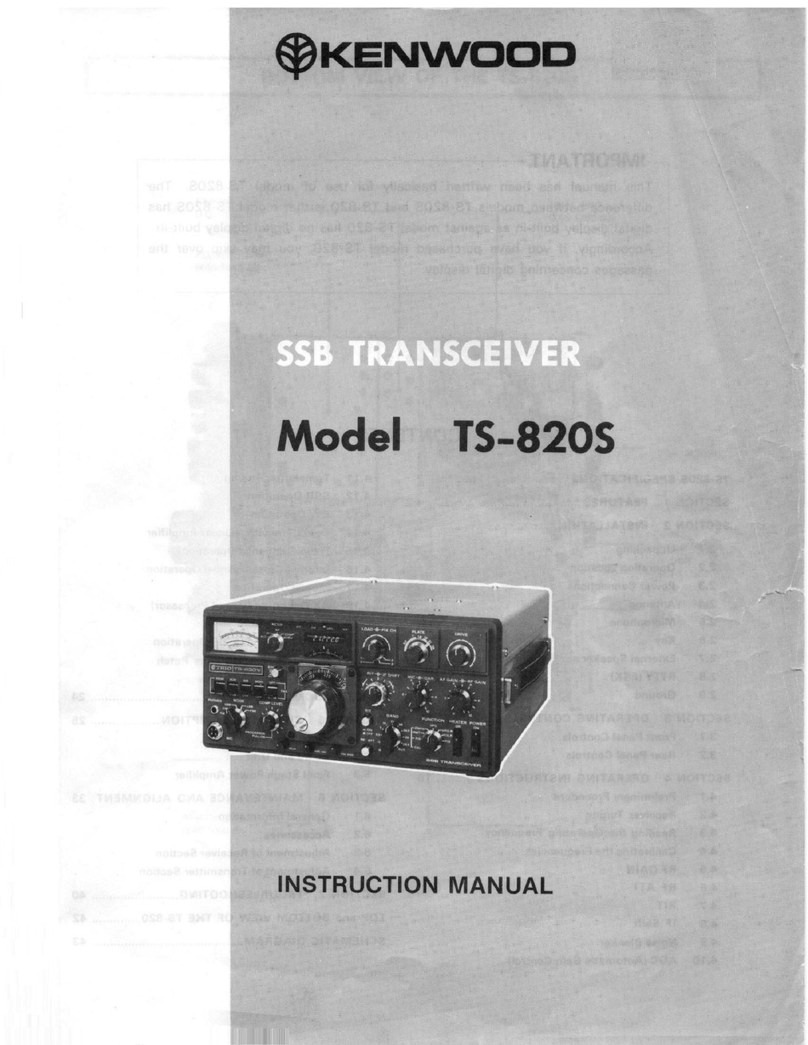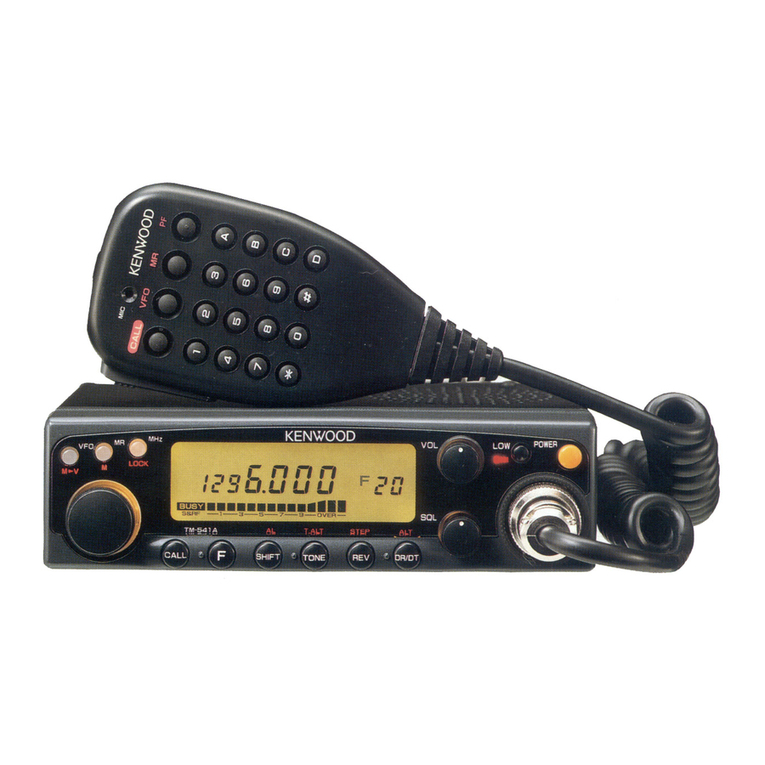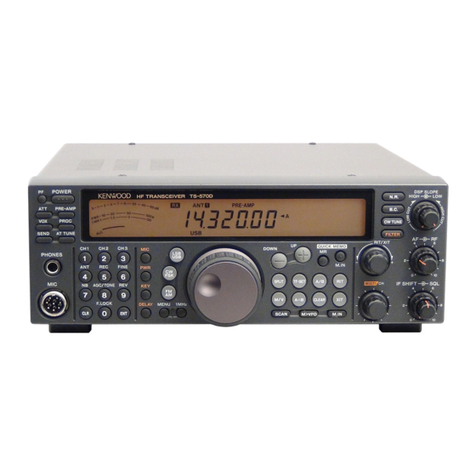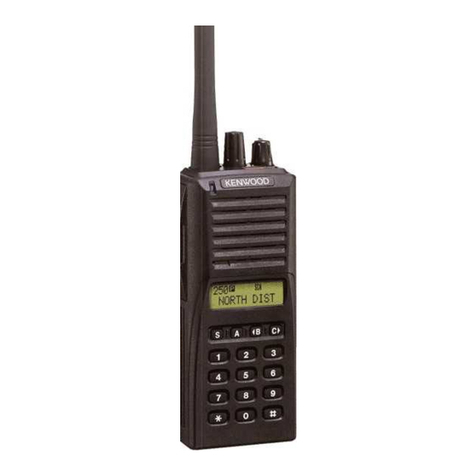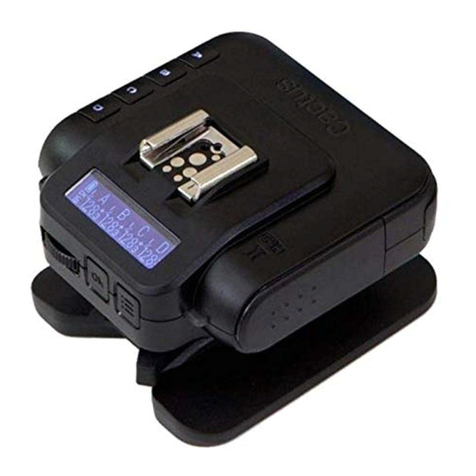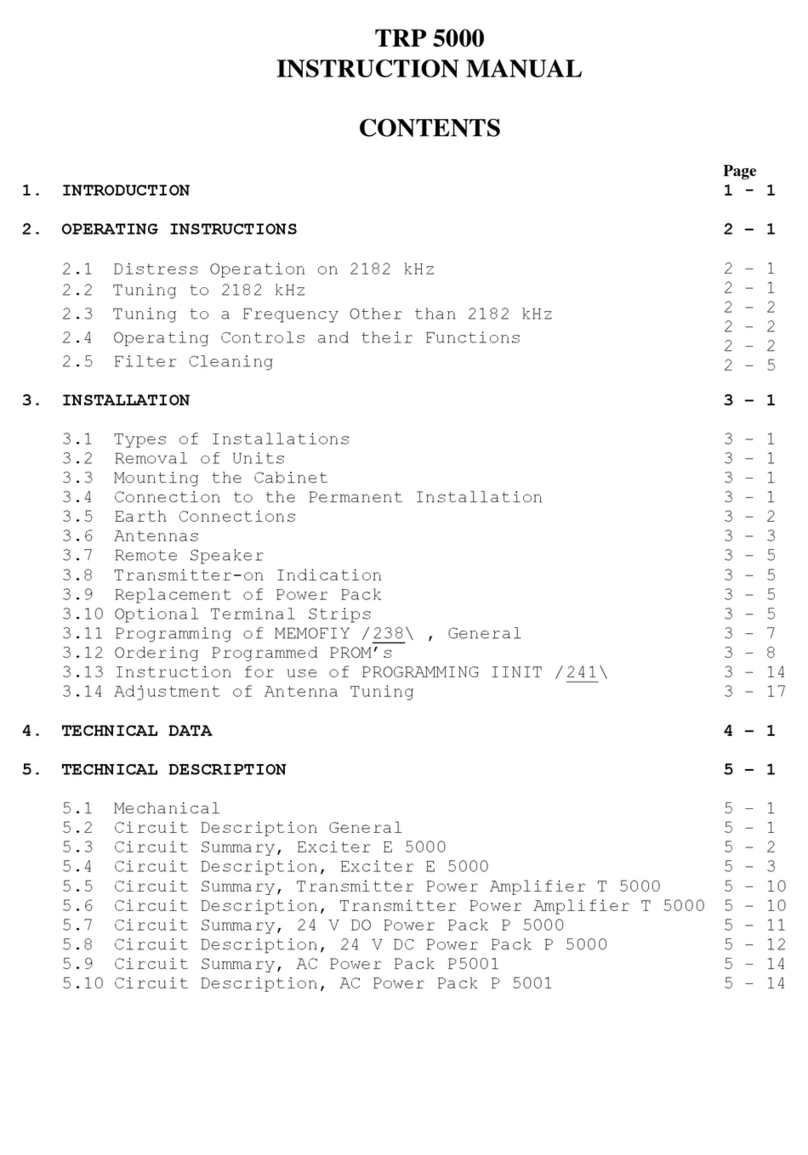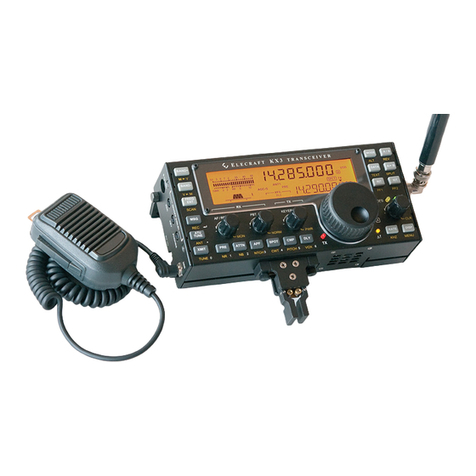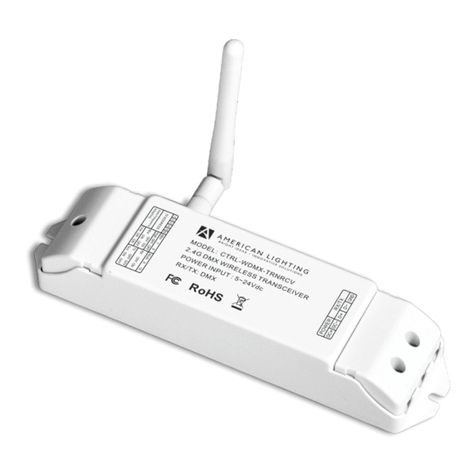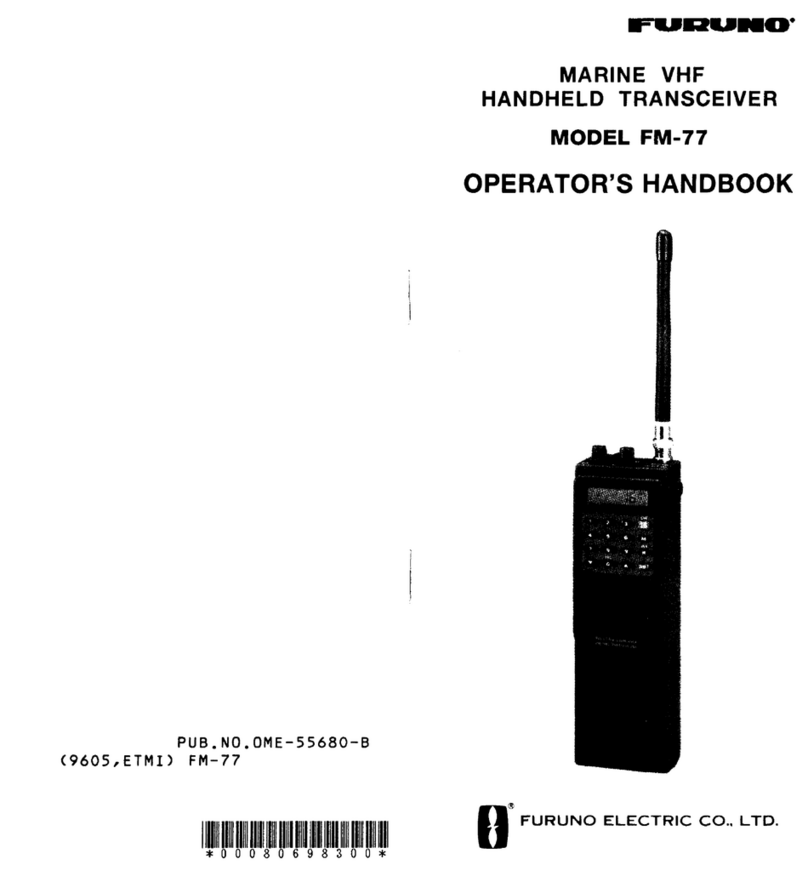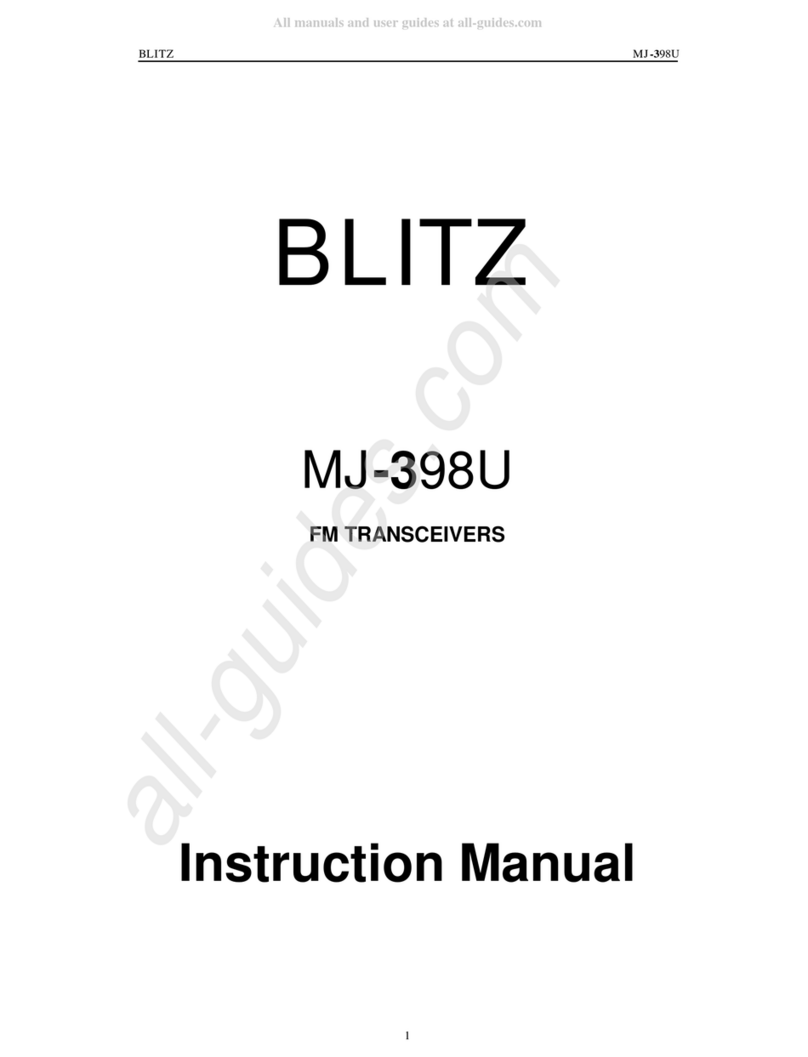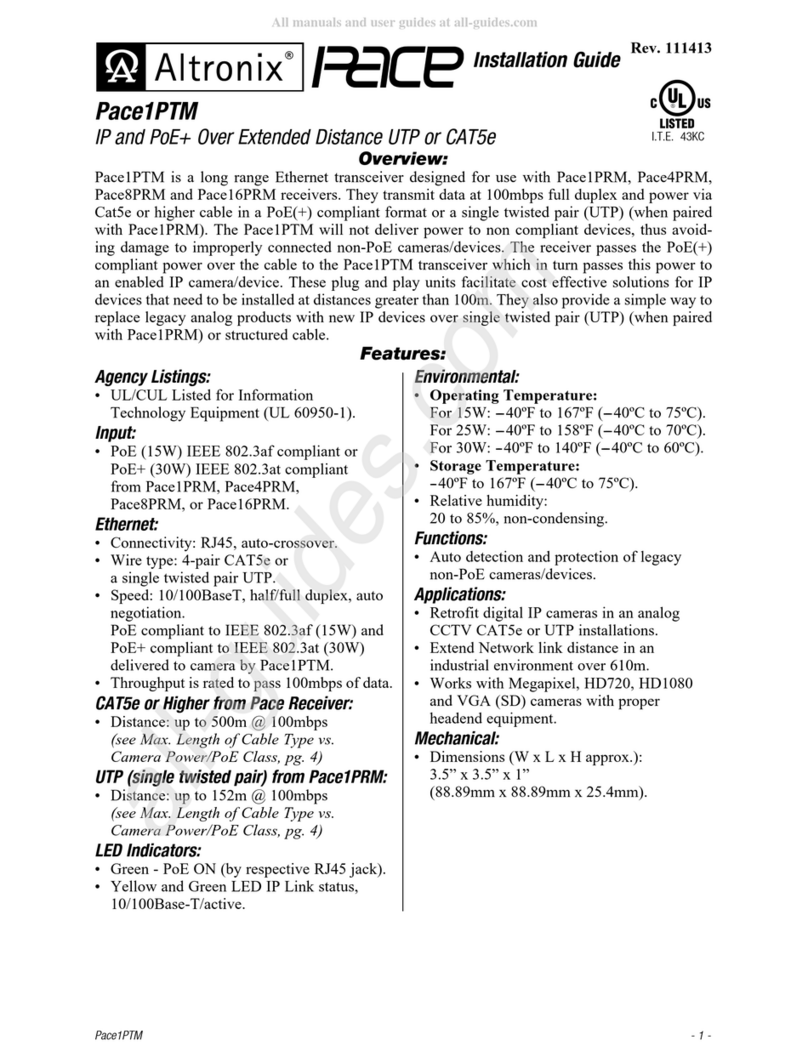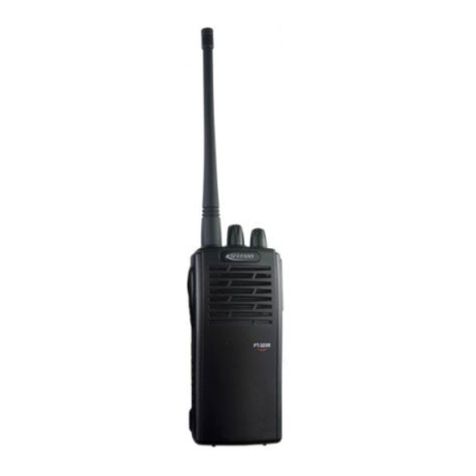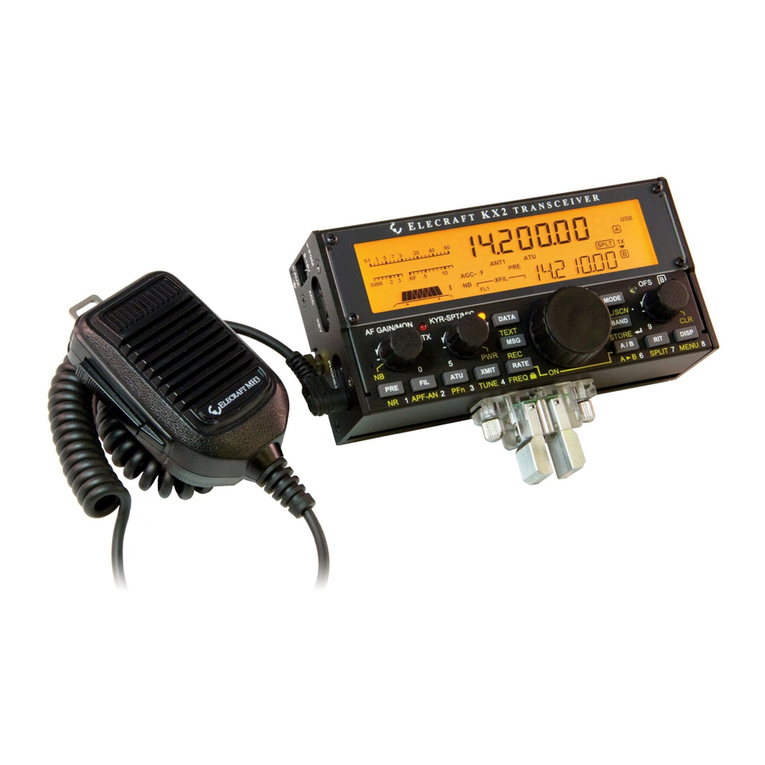6
4 GETTING ACQUAINTED
BASIC OPERATION
SWITCHING POWER ON/ OFF
1Press [ ] (POWER) briefly to switch the
transceiver power ON.
• Do not press the key for more than
approximately 2 seconds; the transceiver will
be switched OFF.
• Upon power up, a high pitched double beep
sounds, followed by the frequencies and other
indicators.
2To switch the transceiver OFF, press [ ]
(POWER) again.
• When you turn the transceiver OFF, a low
pitched double beep sounds.
ADJUSTING VOLUME
Turn the VOL control clockwise to increase the audio
output level and counterclockwise to decrease the
output level.
• If you are not receiving a signal, press and hold
[MONI] to unmute the speaker, then adjust the
VOL control to a comfortable audio output level.
ADJUSTING SQUELCH
The purpose of the Squelch is to mute the speaker
when no signals are present. With the squelch level
correctly set, you will hear sound only while actually
receiving signals. The higher the selected squelch
level, the stronger the signals must be, to receive.
The appropriate squelch level depends on the
ambient RF noise conditions. You can configure
independent threshold squelch levels for the A-band
and B-band.
1Press [SQL].
• The current SQL level appears.
2Turn the Tuning control or press [ ]/ [ ] to adjust
the level.
• Select the level at which the background noise
is just eliminated when no signal is present.
• The higher the level, the stronger the signals
must be, to receive.
• 6 different levels can be set (OPEN: unmuted ~
|| || || || || || : maximum).
3Press [ss
ss
s]or [MNU] to store the new settings or
press [tt
tt
t]to cancel without changing the current
setting.
SELECTING A BAND
By default, two frequencies are displayed on the
LCD. The frequency on top is called theA-band. The
bottom frequency is called the B-band.
Press [A/B] to select theA-band or B-band for
operation. Each time you press [A/B], the “s” icon
moves, indicating which band is currently selected for
operation. Usually, select the A-band to operate the
amateur band and select the B-band to receive the
various broadcasting stations, such asAM, FM, TV
(audio only) or another amateur band {page 35}.
CURSOR KEYS
This transceiver has a 4-way cursor key with a MENU
(“MNU”) key in the center.
/ keys
The / keys function in the same way as the
Tuning control. These keys change the frequencies,
memory channels, and other selections.
Note: You can use the Tuning control in place of the / keys for
most of the controls.
s/ OK key
Press to move to the next step or complete the
setting in various modes, such as Menu mode,
CTCSS frequency selection, and DCS code selection.
t/ ESC key
Press to move back or cancel the entry in various
modes, such as Menu mode, CTCSS frequency
selection, and direct frequency entry.
MNU key
Press to enter the Menu mode.
In Menu mode, you can select the desired menu
number by turning the Tuning control or pressing
[]/ [ ].
A-band
B-band
